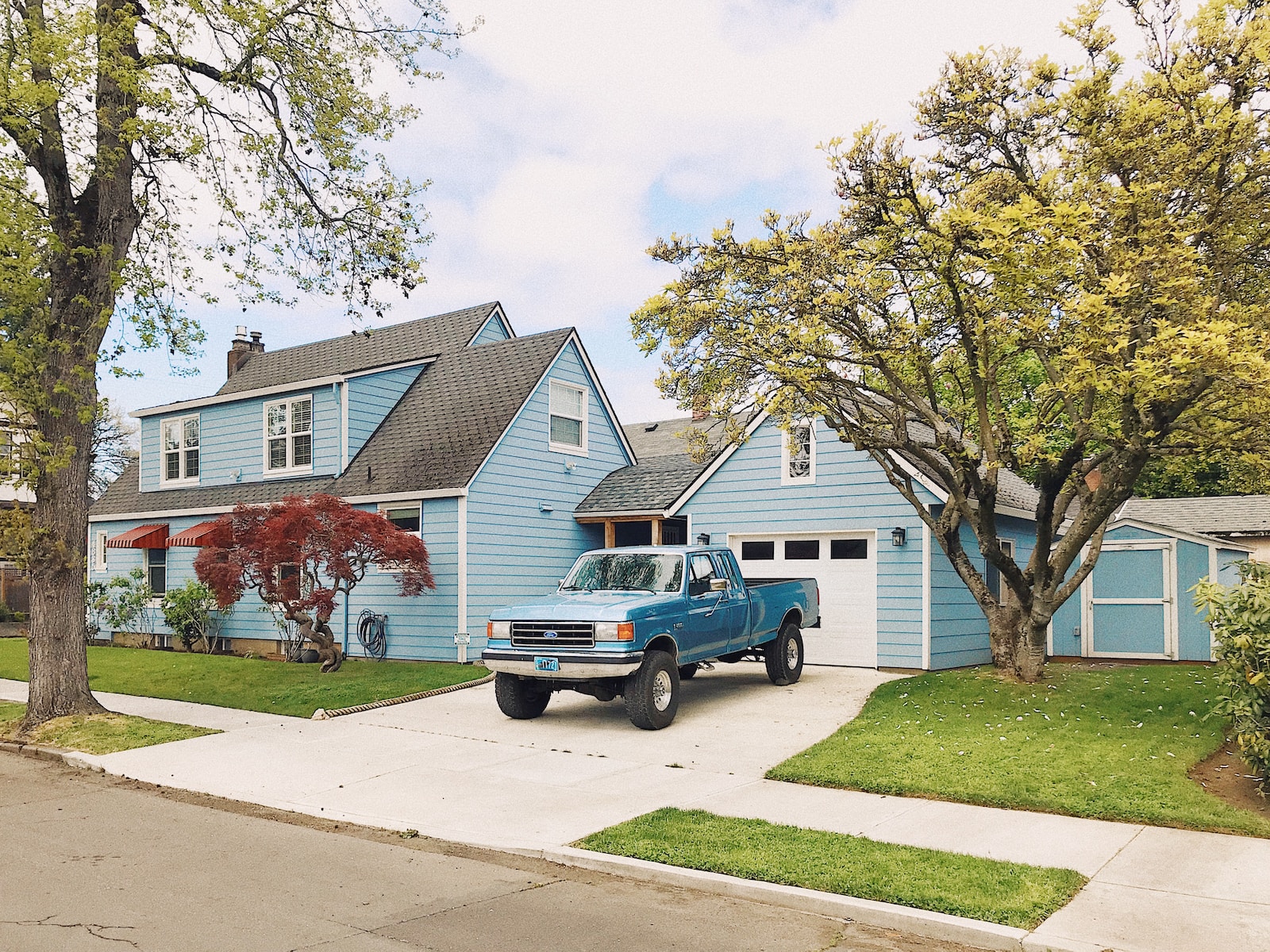Installing a driveway comes with many benefits; it improves the value of your home by making it more appealing to potential buyers if you’re looking to sell your property in the future. A well-maintained and attractive driveway helps enhance the curb appeal of your property.
Not only making your home attractive, but a driveway creates an easier passage to your property, and you can also park your vehicles comfortably. The driveway provides convenience during inclement weather if you don’t want to deal with a muddy yard or shovel snow in your pathway.
Installing a driveway is worth the investment if you want to increase the overall look of your home, create a convenient pathway for your vehicles, or prevent wear and tear on your lawn. However, installing a new driveway doesn’t come cheap; you need machinery and some skills. This article will guide you on installing a new driveway on your property.
Overview Of Driveway Installation

Your driveway installation project begins right from the foundation; The soil condition must be analyzed before you begin working on the project, and the ground has to be leveled properly. If the soil on your property is sandy and well-drained, not much preparation is required for such an area. On the other hand, a lot of work is required to prepare the soil for driveway installation if you’re dealing with bad soil conditions, such as clay.
If you want your driveway installation to withstand the test of time, you have to set up a proper sub-base under the foundation of your driveway. You might have to consult professionals who are experts in sub-base preparations. If you’re replacing the existing driveway with a new installation, you must get rid of the old one if the foundation isn’t set up properly.
With the right foundation sub-base, you don’t have to worry about damages caused during freezing winter and other harsh weather conditions. It’s also important to costs associated with the different types of driveway installation available. The cost varies based on the materials used, foundation preparation needs and the size of your driveway. We’ll talk about the different types of driveway installations, benefits and costs so that you choose the option that’s more suitable for you.
Timing is important when installing a driveway on your property; you want to ensure the moisture and temperature level favor the type of installation you’re dealing with. The weather conditions shouldn’t be too cold or too wet if you want to achieve a proper sub-base installation, which applies to any installation you are working on. If the weather condition is unfavorable, the surface will be compromised.
3 Common Types Of Driveway Installations
Gravel Driveway Installation

Gravel is common in homes because it’s one of the cheapest options available. If you’re on a tight budget, this might be your best option. It’s easier to set up, and not much preparation is required. Even though it’s cheap, gravel is one of the most durable materials used in driveway installation. You don’t have to limit yourself to using only gray colored gravel; you can use the different color options available to match your home design. You can also choose different textures, such as granite, crushed stone, or marble.
Benefits Of Using Gravel Driveway
- Repairing a gravel driveway is very easy.
- Gravel isn’t affected by freezing temperatures.
- You can start using a gravel driveway immediately after installation; no need to wait days to dry up.
- Gravel can withstand heavy weight; even your farm equipment can drive through without causing damage.
- Maintaining a gravel driveway is very cheap and requires less maintenance effort. It can take up to five years to add another layer of gravel to maintain the driveway.
Cost Of Gravel Driveway
The average installation cost for a gravel driveway is $1.25 – $1.80/square foot.
How To Install Gravel Driveway
Clear The Path For The Driveway
You should mark the driveway’s path so you can make all the preparations required. Use stings and stakes to measure the perimeter, so you know exactly the area to cover.
Remove Grass And Topsoil
All the grass and topsoil within the perimeter should be cleared; you should make sure the path is professionally excavated to save energy and time.
Calculate The Gravel Needed
You should first calculate the cubic feet required by multiplying the height, length, and depth. You should divide by 27 to obtain the cubic yards. Once you provide this information to the store where you’re buying the gravel, they will provide you with the required quantity for your project.
Order The Gravel
You should find sellers near your area and schedule delivery with them; they should deliver it to your home. Choose the type that’s more suitable for your home. We have already mentioned that there are different gravel colors to choose from.
Level The Driveway Path
Leveling the pathway is important before the gravel is delivered to you. You can use a backhoe or by hand; adding a weed barrier is also recommended, which will prevent grass from growing in your backyard.
Spread The Base Layer
For the base layer, it’s best to use #4 crushed limestone. It should be pressed so that a solid foundation is created. You will need a heavy truck like a bulldozer to do this task.
Add The Middle Layer Of Gravel
The second layer of gravel can now be added; the best gravel to use is #53 crushed limestone. It compacts well, and it allows water to drain easily.
Add And Smooth The Top Layer
Finally, you should spread #8 crushed limestone and smooth this layer on your driveway. You can also use pea gravel or river rock as the top layer for your driveway.
Concrete Driveway Installation

If you’re looking for a sturdy driveway that can last for decades, you should install a concrete driveway in your home. A well-built concrete driveway can last for more than 40 years. After installing a concrete driveway, you must wait for one week before parking your vehicle on it. Heavy equipment should not step on it until after one month. A concrete driveway is your best option if you’re looking for something durable that will last longer and you have the budget.
Benefits Of Using A Concrete Driveway
- With proper maintenance, a concrete driveway is more durable than other driveways.
- Less maintenance is required for concrete driveways; it’s easy to clean dirt on them, and oil stains can be scrubbed with a degreaser. When winter arrives, apply a sealer to protect the concrete driveway against extreme temperatures.
- Concrete driveways are brighter in the evenings and cooler during summer. This is due to the lighter color of concrete; the overall appearance of concrete is attractive.
- You can get rid of snow easily on concrete driveways.
- You can dye concrete driveways into different colors; you customize them in different styles after installation.
The Cost Of Concrete Driveway
The average installation cost for a concrete driveway is $4-$15/Square-foot. The cost will be affected by design elements, driveway size, preparations needed, and reinforcements.
How To Install Concrete Driveway
Layout The Perimeter With Wooden Stakes
After setting the shape and dimensions, you should lay out the perimeter with wooden stakes.
Add Wooden Forms
You should create temporary housing for the driveway by using sturdy wooden planks. These wooden forms will keep the concrete in place; the forms should be anchored to ensure they’re straight and aligned.
Excavate The Topsoil And Then Level The Sub-Base For The Driveway
Creating a solid foundation is important; you should dig the topsoil to the desired length. It’s not suitable for the sub-base, you have to dig another 4 inches to add your hardcore. You might need to hire a plate compactor for this task. Once you have a compacted layer, a solid foundation will be formed to create a durable concrete driveway.
Reinforcing The Concrete
This optional step will make the driveway stronger; reinforcement will enable the driveway to handle heavier loads. You need to reinforce steel rebars arranged in a grid pattern; you can buy a concrete wire mesh for this project.
Pour The Concrete
You’re now ready to start pouring the concrete into your driveway. You should have your readymade mix, which can be poured into the driveway perimeter. The concrete should be poured in even loads; you should use a hoe to distribute the concrete while you’re pouring it to ensure that it’s relatively flat, and the level should be ahead of the forms you created slightly.
Flatten And Smooth The Surface
After the area is covered with concrete, you need to flatten the surface to create a consistent and smooth surface for the driveway. Remove excess concrete to ensure the slab is leveled with the forms. You can use 2×4 timber across the slab and then move back and forth to flatten the concrete. The excess concrete can be used to fill small areas. In order to smooth the surface, you should use a concrete float.
Create Contraction Joints
Contraction joints help control the slab’s expansion and contraction when it dries up. The joints can be cut with a concrete grooving tool; if the driveway is 4 inches deep, the joints can be cut every 4 feet or more, and you want to ensure they’re evenly spaced. The joints created should be at least one inch deep.
Make The Surface Non-Slip
Creating a non-slip finish will help keep vehicles in traction. You can use a thick-bristled broom for this task; you just need to run the broom slightly across the driveway and repeat the action until the whole concrete is non-slippery.
Curing
You have to let the concrete cure before you begin using it; it’s recommended to wait for at least one week to allow the concrete to cure. During this period, the driveway should be watered to help make it even stronger.
Remove The Forms
The forms can be removed after you have noticed the slab has hardened. Start by removing the stakes carefully, and then you can remove the forms individually. You have to be careful as the concrete has cured completely yet.
Edge Your Concrete
This optional step allows you to create a smooth finish on the edges of your driveway. You have to use an edging to accomplish this task, and it should be used with care to avoid pressing the concrete down.
Using The Concrete Driveway
You should understand that the concrete will not cure to its full strength until after one month. It’s better not to park on the driveway until after one month.
Asphalt Driveway Installation

This installation will be a more suitable option if you want a smooth and seamless appearance. Asphalt driveways are less expensive than concrete driveways and can be installed fast, making them a great option for businesses and homeowners.
Benefits Of Using Asphalt Driveway
- They last longer than other driveway types.
- An asphalt driveway can resist extreme temperature conditions.
- They can be repaired easily, and you must seal the asphalt driveway every 2 years.
- The cost of maintenance is relatively when compared to other installation options.
- Asphalt driveways can be used immediately after they’re installed on the driveway.
The Cost Of Asphalt Driveway
The average installation cost for asphalt driveways is $7-$13/Square-foot. This means it’s more expensive than other options, including concrete and gravel.
How To Install Asphalt Driveway
Remove The Old Pavement And Clear Debris
Start by stripping the old pavement on the driveway; whether using concrete, gravel, or old asphalt, you should clear the area for new installation. You might need heavy machineries like forklifts or bobcats to clear the old paving. You should locate equipment rental companies to help you. It’s important to clear all debris to ensure the surface is cleaned up and ready for new pavement on the driveway.
Create Proper Drainage
You don’t want the asphalt pavement to collapse prematurely, so you must grade the surface to have proper drainage. Without proper drainage, there will be cracks, potholes, and crumbling. If you’re unfamiliar with how to grade the slope, you should seek help from contractors.
Prepare The Sub-Base
Creating the sub-base provides a stable foundation for the pavement and is your driveway’s main support. The sub-base must be compacted correctly, or the asphalt pavement won’t last long. It will end up cracking sooner than expected, especially during harsh weather. If done properly, the sub-base will act as a barrier to frost to reduce damage from freezing and thawing.
Proof Roll
After grading the sub-base, proof rolling is the next thing to do, which helps the underlying matrix by making it strong enough to hold the load added to the driveway.
Add The Binder Layer
The binder layer also helps in creating a strong and more durable driveway. It’s made up of oil and a mixture of aggregate to help in supporting the asphalt.
Add The Asphalt
You have done all the required preparations, and you can start adding asphalt to the driveway. The surface asphalt consists of small aggregates, oil, and sand. These components are responsible for the jet-black asphalt look, and if the installation is done correctly, you should achieve a shiny, smooth, and attractive finish on your driveway.
Create Transitions Between Old And New Pavements
The pavement you created will probably connect to existing driveways, roadways, or parking lots. It’s important to create a smooth transition between these structures. The point where the new asphalt meets the old one is called the butt joint. They have to be graded properly if you don’t want to end up with damaged patches. Smoothing butt joints is important as it allows drivers and pedestrians to move around comfortably.
FAQs
What’s The Cheapest Driveway Installation?
Gravel is the cheapest but should not be used as a long-term solution. Concrete or asphalt are the best options if you are looking for durability.
Can You Build Your Driveway?
If you have the required time and machinery, you can do it yourself without hiring a contractor. If you don’t have the machinery, you should go for rentals. However, hiring an expert in construction will do the job better since they have years of experience than the average homeowner who wants to do it for the first time. Working with a specialist will make things easier; if you can afford it, you should hire them to handle your projects.
How Deep Should You Dig A Driveway?
The typical length is 6-8 inches. However, the type of driveway will determine the length you will dig.
How Many Years Does Asphalt Last?
If they’re built right, you should expect them to last for 20-30 years. The duration they will last will depend on many factors, such as the sub-base preparation, upkeep and maintenance.

